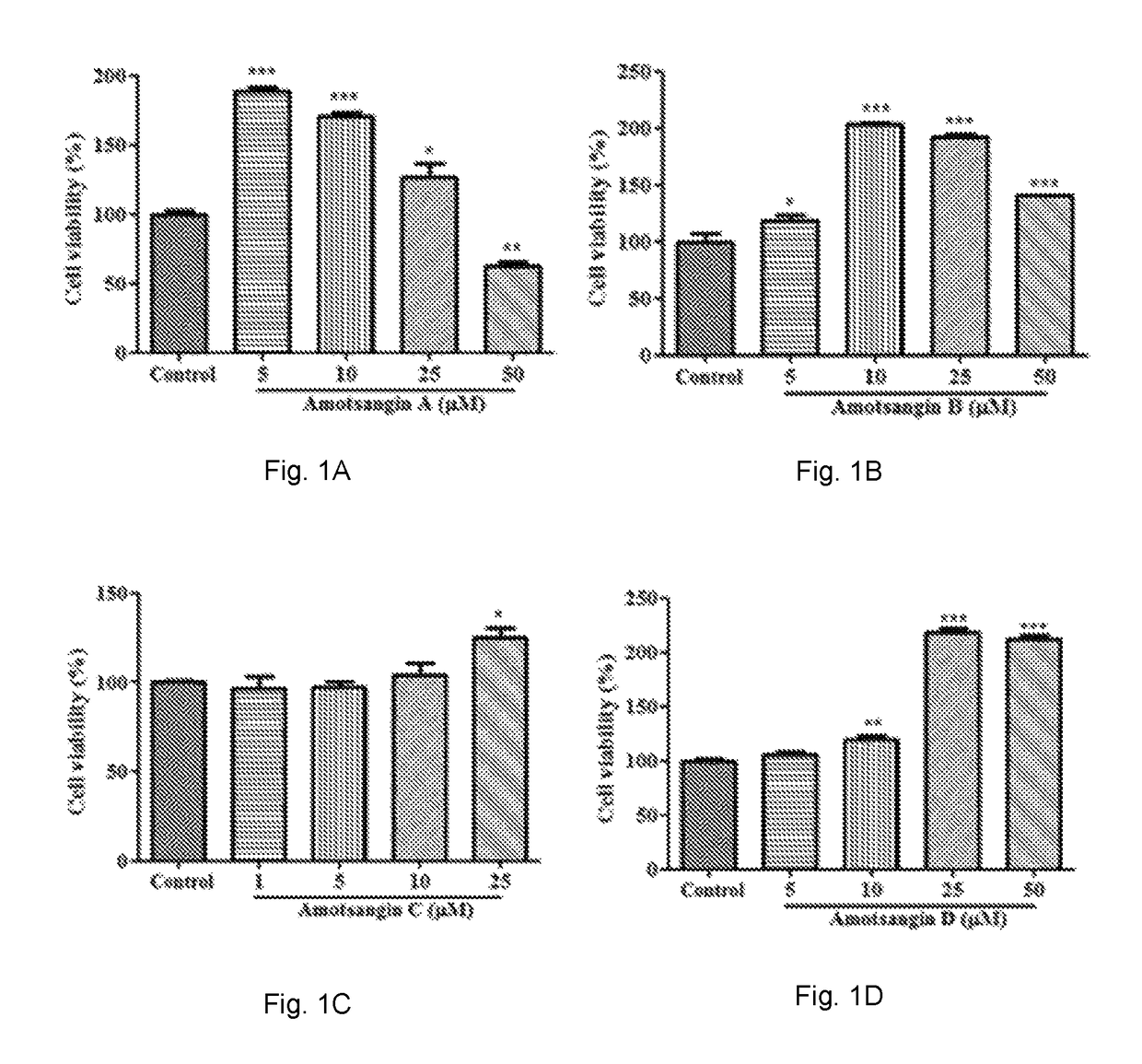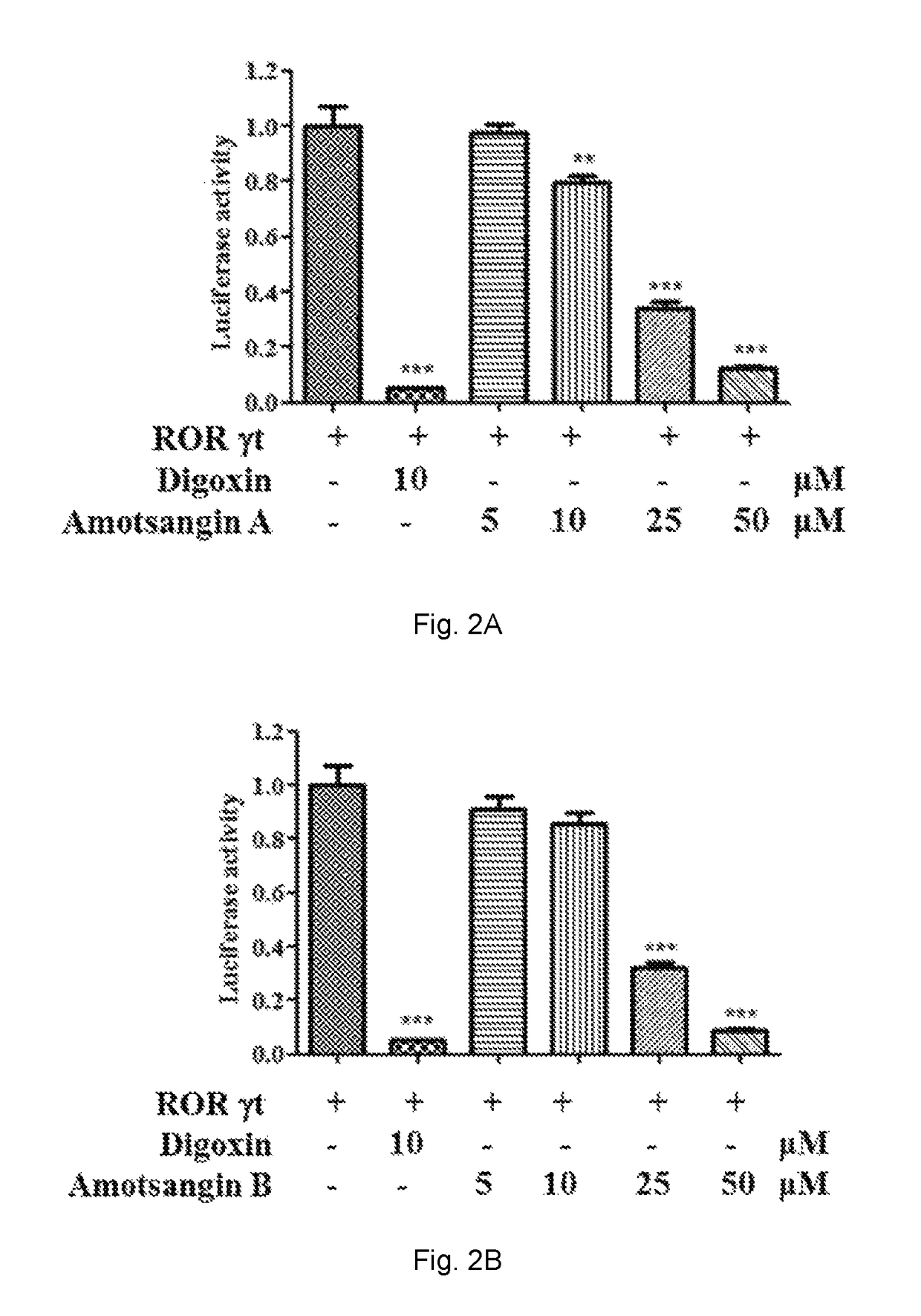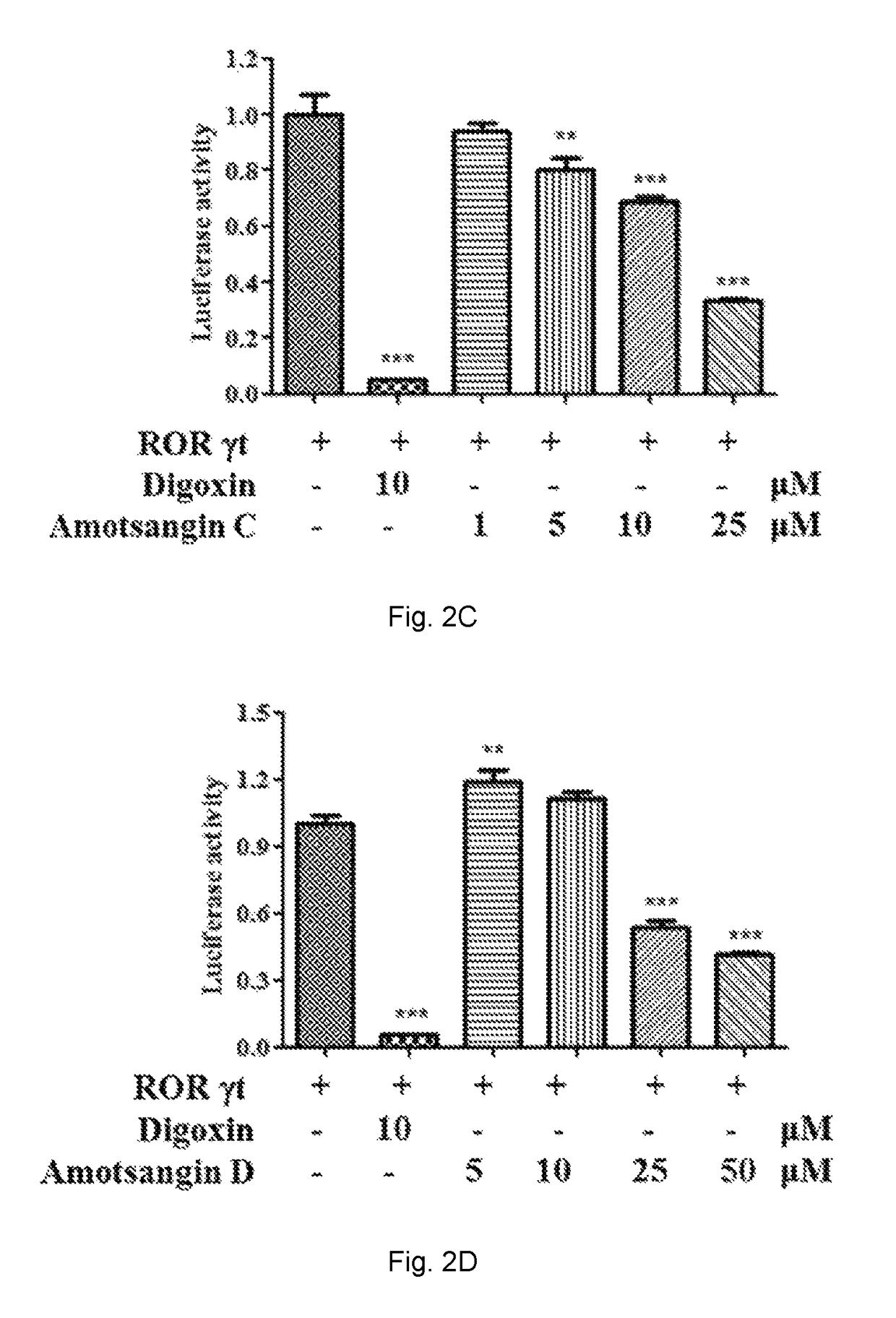Limonoids for treating autoimmune diseases
a technology for autoimmune diseases and limonoids, applied in the field of limonoids for treating autoimmune diseases, can solve the problems of threatening human health and the magnitude of the global problem, and achieve the effects of suppressing the differentiation of t helper 17 cells, and reducing the risk of autoimmune diseas
- Summary
- Abstract
- Description
- Claims
- Application Information
AI Technical Summary
Benefits of technology
Problems solved by technology
Method used
Image
Examples
example 1
Cytotoxicity of Amotsangin A, B, C and D as Limonoids of the Present Invention
[0113]The cell viability of human peripheral blood mononuclear cells (PBMCs) under treatment with Amotsangin A, B, C and D has been evaluated
Isolation and Cultures of Human PBMCs
[0114]Human peripheral blood mononuclear cells have been isolated from buffy coat. In brief, the buffy coat provided by Macao Blood Transfusion Centre was mixed with normal saline, and then added to 50 mL centrifuge tube containing Ficoll-Pague plus (Amersham Biosciences). The mixture was separated into several layers after centrifuged at 350 g for 35 min. The layer of mononuclear cells has been collected, and then washed twice by normal saline. These cells were be used for the experiments.
[0115]Human PBMCs (1×105 / well) were cultured in 96-well plates in triplicate in RPMI 1640 medium (Gibco, Paisley, UK) with 10% fetal bovine serum (FBS; Gibco), penicillin (100 units / mL) and streptomycin (100 μg / mL), and differ...
example 2
Effects of Amotsangin A, B, C and D as Limonoids of the Present Invention on the ROR-γt Luciferase Reporter Activity
Lightswitch Luciferase Reporter Assay
[0117]ROR Gamma T LUCPorter™ Stable Reporter cells and LUCPorter™ Vector Control HEK293 cells (Imgenex) were plated in 96-well plates at 5×104 cells / well in triplicate in RPMI 1640 medium with 10% fetal bovine serum, penicillin (100 units / mL), streptomycin (100 μg / mL) and puromycin (3 μg / mL) over night. Cells were treated with 5, 10, 25, and 50 μM Amotsangin A, B, C or D or 10 μM digoxin for 16 h. Then the complete mixture of luciferase assay reagent (Biocompare, Texas, USA) has been added to the wells and the mixture has been incubated for 30 min at room temperature in the dark. The mixture has been transferred into a 96 well white plates before reading. Finally, each well was read for 2 seconds in a plate luminometer on a Microplate UV / VIS Spectrophotometer (TECAN, Switzerland). Data are obtained from three independent experiments...
example 3
Effects of Amotsangin A, B, C and D as Limonoids of the Present Invention on the Expression of ROR-γt in HEK293 Cells
Transfection of Human ROR-γt Plasmid to a HEK293 Cell Line
[0119]The transfection assay is preformed according to the manufacturer's instruction of lipofectamine LTX (invitrogen, USA). In brief, HEK293 cells obtained from the American Type Culture Collection (ATCC, Manassas, Va., USA) were seeded in 1.5 ml of DMEM growth media plus 10% FBS at 5×105 cells per well. Five hundred micro liter Opti-MEM Reduced Serum Media containing 1.25 μg of DNA was added to the cells to be transfected, and then 1.25 μl of PLUS was added into the above diluted Opti-MEM:DNA solution, gently mixed and incubated for another 5 min at room temperature. Subsequently, lipofectamine LTX™ Reagent was added into the above solution, mixed gently and then incubated 30 min at room temperature to form DNA-lipofectamine LTX Reagent complexes. Finally, 500 μl of the DNA-lipofectamine LTX Reagent complexe...
PUM
| Property | Measurement | Unit |
|---|---|---|
| pH | aaaaa | aaaaa |
| concentration | aaaaa | aaaaa |
| concentration | aaaaa | aaaaa |
Abstract
Description
Claims
Application Information
 Login to View More
Login to View More - R&D
- Intellectual Property
- Life Sciences
- Materials
- Tech Scout
- Unparalleled Data Quality
- Higher Quality Content
- 60% Fewer Hallucinations
Browse by: Latest US Patents, China's latest patents, Technical Efficacy Thesaurus, Application Domain, Technology Topic, Popular Technical Reports.
© 2025 PatSnap. All rights reserved.Legal|Privacy policy|Modern Slavery Act Transparency Statement|Sitemap|About US| Contact US: help@patsnap.com



